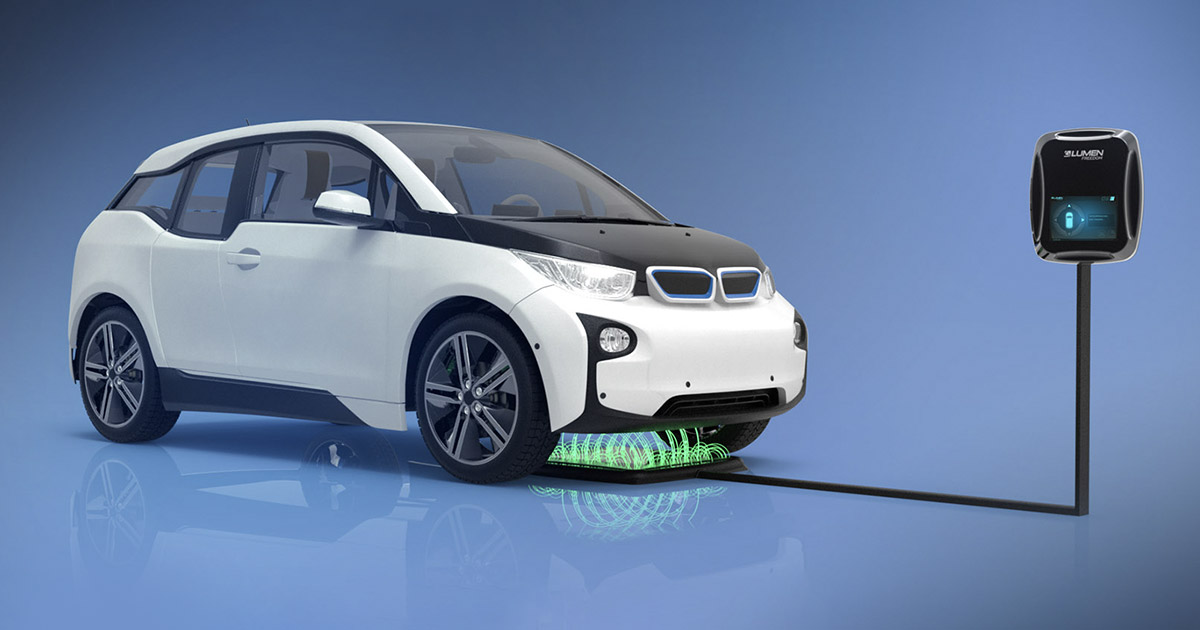Introduction to Wireless Charging Technology
Wireless charging technology uses magnetic induction to transfer electricity between two objects within close proximity, without requiring a wired connection. This makes it possible to charge electric vehicles without plugging them into a charging port. The technology works by using a charging pad placed on the ground that transmits power to a receiving plate installed in the vehicle. When the vehicle is parked over the charging pad, an alternating current passes through a transmitting coil located in the pad, generating an alternating magnetic field. A second receiving coil located in the vehicle picks up the magnetic field and converts it back into electrical current to charge the vehicle’s battery pack.
Advantages of Wireless Electric Vehicle Charging
Wireless Electric Vehicle Charging provides several key advantages for electric vehicles compared to traditional plug-in charging methods:
Convenience – Drivers no longer need to locate a charging port, drive up close to it, and plug in a charging cable. With wireless charging, simply parking over a charging pad is all that is required. This makes the charging process quicker and more seamless.
Weather Protection – Wireless charging eliminates concerns about plugs or ports getting wet, dirty, or damaged from weather exposure. This improves long-term durability and reliability of the charging system. Cables can also become worn out over time from repeated plugging/unplugging, which is avoided with wireless technology.
Standardization – A common wireless charging standard could allow EV drivers to charge their vehicles at multiple public locations using the same technology. This increases convenience compared to having various charging connectors between vehicle brands currently. Standardization is being developed through alliances like the CharIn initiative.
Accessibility – Wireless charging pads can be installed in locations that may not accommodate traditional charging spots that require power cables extending to the vehicles. This opens up additional street-side and parking lot locations for charging.
Advancements in Wireless Electric Vehicle Charging
Significant advancements continue to be made to improve the performance of wireless EV charging systems:
Faster Charging Speeds – New generations of wireless charging technologies are achieving faster and more powerful output levels comparable to many plug-in DC fast charging systems. This helps address one of the initial disadvantages of wireless being slower charging.
Longer Ranges – Improved coil and electronics designs are extending the maximum effective air gap between vehicle and pad to around 10 centimeters. This allows for easier parking positioning and gives more tolerance for vehicle movement on the pad.
Higher Efficiencies – New magnetic materials and resonance tuning methods are driving up efficiency to around 90%, closer to the high efficiencies of wired Level 2 charging systems. This wastes less energy as heat during charging.
Dynamic Charging – Advanced systems in development will enable charging even while vehicles are in motion, such as dynamic wireless charging installed in roadways. This provides truly free-range conductive EV charging without stops for refueling.
Standardization of the SAE J2954 Standard
A major milestone for the advancement of wireless EV charging was the standardization of the SAE J2954 technical standard in 2019. This standard establishes consistent guidelines for wireless power transfer systems:
– Defines electrical and physical specifications for AC power levels up to 11kW for passenger EVs.
– Covers functional requirements like charging control messaging, foreign object detection, and more.
– Specifies coil design parameters and positioning tolerances between vehicle and pad for maximum interoperability.
– Requires 95% minimum power transfer efficiency for efficiency and minimal energy losses.
– Allows for scalability to support higher power levels in future generations.
The standardization of SAE J2954 has accelerated industry adoption by providing a framework for manufacturers. It ensures vehicles and infrastructure from different brands can communicate and transfer power seamlessly through a common interface. This furthers the promise of a standardized wireless charging ecosystem.
Initial Wireless Charging Infrastructure Deployments
Led by the CharIn initiative, the first pilot wireless charging roads and highways are beginning to launch:
– In South Korea, charge pads have been installed along a short 150m section of a highway for dynamic charging of commercial trucks during motion.
– In Germany, a 35km autobahn stretch will have charging lanes installed for dynamic passenger vehicle charging capabilities starting in 2025.
– In America, the first roadway charging deployment is planned for a 1-mile section of highway in Motor City, Michigan starting in 2023.
– Public parking lots and town centers are also getting wireless charging parking spots to provide convenient charging for local drivers.
– EV charger manufacturers like BMW, Volkswagen, and Tesla are introducing wireless home charging systems integrated into driveways and garages.
As more electric vehicles are sold globally with wireless charging capabilities built-in under standards like SAE J2954, widespread deployment of compatible charging infrastructure will accelerate. This will stimulate further technology improvements and popularity of wireless as a preferred charging method.
Consumer Acceptance and Future Potential
While still in early stages, surveys show consumer interest and acceptance of wireless charging technology for electric vehicles is growing significantly:
– Over 70% of EV buyers said wireless charging was either “important” or “very important” in a recent survey when choosing their next electric vehicle.
– Key factors driving interest include the enhanced convenience compared to conventional charging methods and avoiding cable/connector issues over the long-term.
– As the upfront costs of wireless charging systems fall closer to plug-in options with larger scale production, the business case becomes more compelling for automakers and consumers.
Barring no critical issues with further development and testing, most analysts expect wireless charging to become the dominant charging method within the next 10 years. As infrastructure expands, its advantages of simplified and accessible charging could accelerate overall EV adoption worldwide. This would aid the global transition to more sustainable transportation without compromising driver convenience.
*Note:
1. Source: Coherent Market Insights, Public sources, Desk research
2. We have leveraged AI tools to mine information and compile it

